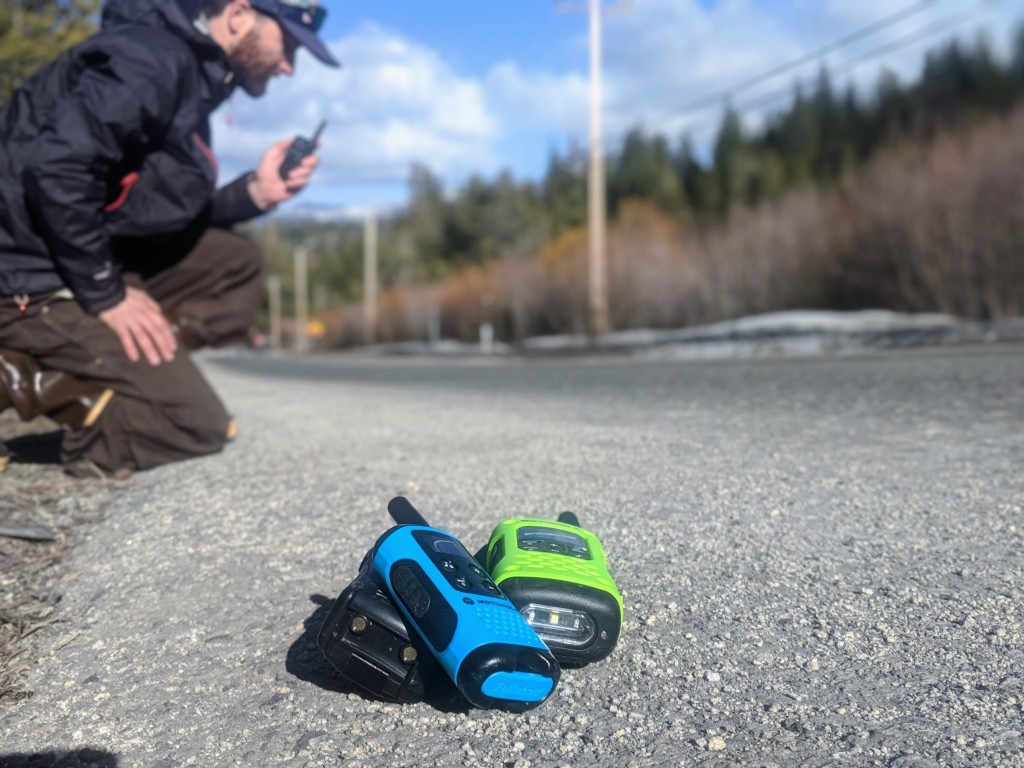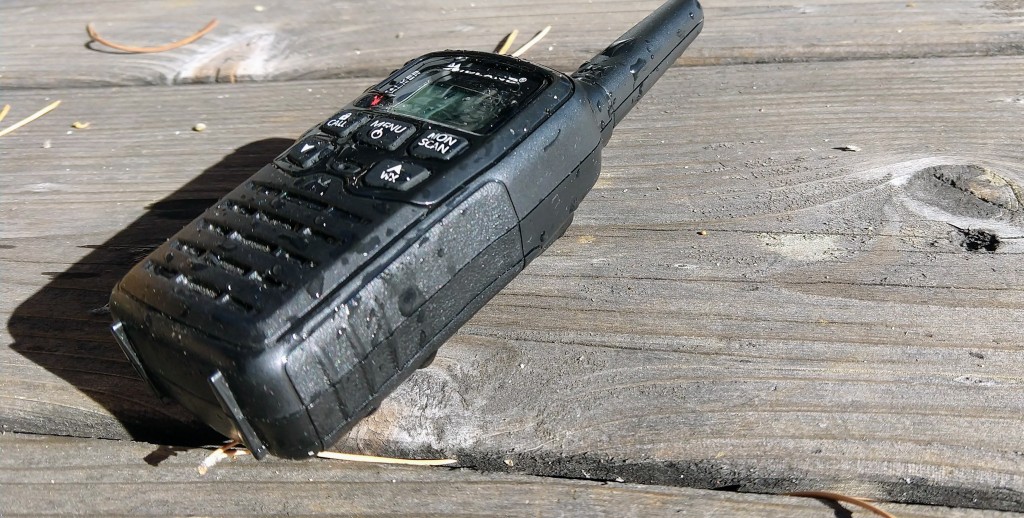Our radio experts include mountain guides, ski patrollers, sea kayak guides, licensed ham radio operators, and electronics specialists. Our team has spent years testing walkie talkies both in the field and in the lab, evaluating each radio in five metrics to formulate a comparative score.
Range and Clarity
In this metric, we focused on testing scenarios that were more representative of typical outdoors use. While maximum line of sight range sounds great for advertising, it's less helpful when determining how well a radio actually works in any given activity. Each option's range and clarity was tested in the same settings outside, from forested trails to rolling hills to mountain ridges. We started at more conservative distances of .5 miles, slowly lengthening the distance between the two radios until we couldn't hear one another, taking detailed notes along the way. We sized up each walkie in two main range categories: minor and major obstructions. Minor obstructions include obstacles like trees and major obstructions include hills or mountain features, such as a ridge.
In addition to our more exacting range tests, we took each walkie out for several weeks for many different activities, from rock climbing to skiing to boating. During these field tests we took notes along the way about our various range and clarity findings. For all testing in this metric, clarity was scored with the classic ITU-R reporting format, which dates back pre WWII, with a 1 to 5 scale. 1 is scarcely perceptible, 5 is very good.
Ease of Use
Ease of use encompasses many facets of the radio's design. First, we tested if we could adjust the channel to a designated FRS channel and adjust the volume without any experience with the radio and without reading the directions. Having these basic features intuitive to use is important for a situation where you may be handing off your radio to a friend with minimal time to learn how to use it.
We then opened up the supplied manual and made sure all of the functions were explained and usable. If the manual was not sufficient, we resorted to a search of internet resources.
For many of us, a radio will be used in cold environments. Having an interface that is friendly to our clumsy gloved fingers is vital to efficient communication. We tested each radio wearing a variety of glove types and found which radios could be operated without freezing our bare fingers. Through our field testing, we kept track of many other factors, such as the effectiveness of the attachment clip, how easy it was to charge or change batteries, how well the keypad lock prevented inadvertent changes, if the display was readable at night, and the presence or lack of useful functions.
Weather Resistance and Durability
Some of the radios come with claims of water resistance from their manufacturer, while some make no attempt to quantify how they hold up to the elements. For the radios that have water resistance specifications, we tested each one to the specification listed for it. For example, if it said it could withstand a pressurized stream of water, we sprayed it at high power with a garden hose. For the radios that did not come with water specifications, we gave them a light sprinkle of water.
In addition to testing specifications, each walkie talkie was tested in all sorts for conditions in the field. From dry and dusty bike rides to wet days in a damp backpack, the radios were used how you would use them.
We didn't baby these radios or keep them in protective cases because you likely won't either. We jumbled them all together at the bottom of a backpack and rode one of the rockiest mountain bike trails in Tahoe. They got dropped and abused with the intention of moving through their life span more quickly than normal, occasional use. We noted cheap and weak feeling casing, easily breakable parts, and premature signs of wear throughout our testing process.
We also poured through thousands of internet reviews of the models we tested, looking for common problems many users reported. We compared our experience with the product with the reviews of others to evaluate if a problem seemed like a trend or just an outlier.
Battery Life
A radio that leaves you stranded by running out of battery can be a safety or logistical nightmare when you really need to communicate important information. It is also important to have an accurate battery indicator to stay informed about how much life you have left. We took the walkie talkies to our lab and made a 10-second transmission on each one every 5 minutes until they ran out of battery. Radios that lasted longer got a higher rating, but that score was weighted up or down by the accuracy or existence of a battery indicator. Then we looked at how the battery could be charged or replaced. More flexibility and ease of recharging scored the radio a bit higher.
Size and Weight
For most of us, the weight will be an important factor when choosing a walkie talkie because we will be carrying these radios for many miles. We don't just take the manufacturers' word for it. We weighed (with batteries) and measured the walkie talkies for ourselves. If you are wondering if the radio will fit in that little hip pocket on your backpack or in the cup holder of your ATV on a hunting trip - here is where you will find the answers. We also took into account more than just the hard numbers. Some radios had a flatter and less dense shape that fit well into pockets and clipped to packs, while others were more brick-like and felt larger than their dimensions. We scored the size and weight according to the measured data and how they felt as we carried them.






